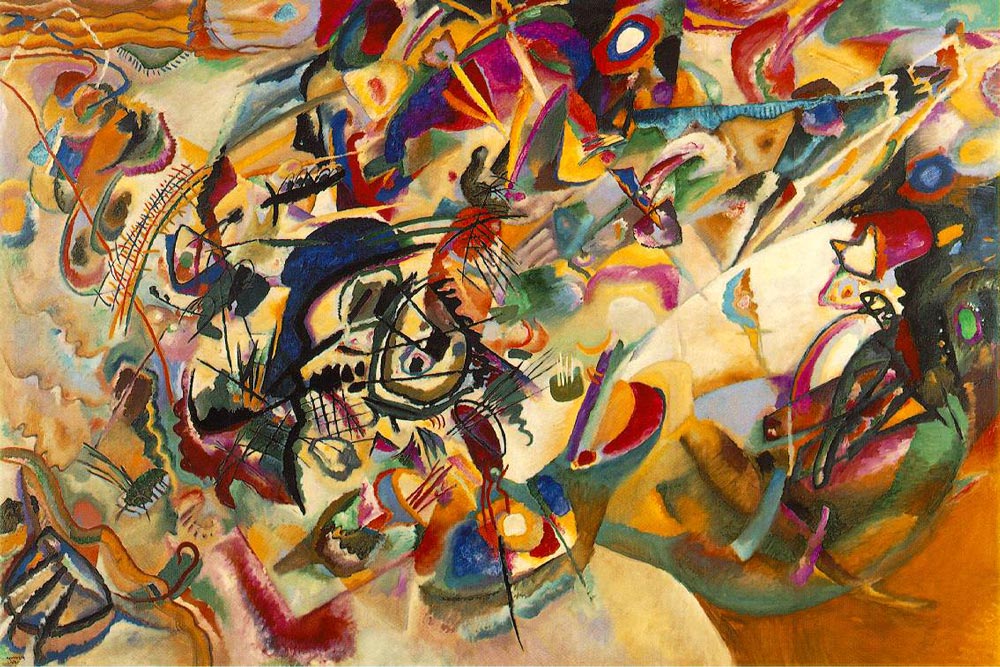
Wassily Kandinsky – Composition VII (1913): Iconic Abstract Painting That Changed Modern Art
Wassily Kandinsky is widely regarded as one of the pioneers of abstract art, and Composition VII stands as a monumental example of his revolutionary approach. Painted in 1913, this large-scale work is often described as a visual symphony—an orchestration of color, shape, and movement that defies traditional representation.
Unlike figurative painting, Kandinsky’s abstraction does not depict recognizable objects or scenes. Instead, he focused on expressing emotion and spirituality through visual elements. In Composition VII, swirling forms, overlapping lines, and vivid color patches create a sense of dynamism and chaos, yet they are carefully balanced to produce harmony. Kandinsky believed that colors and shapes could evoke emotions in the same way music does, with each hue and curve corresponding to a specific mood or feeling.
The painting is dense with energy: fiery reds, deep blues, and vibrant yellows collide and blend, while curving lines guide the viewer’s eye across the canvas in a rhythmic flow. Kandinsky intended his work to be an experience for the soul, encouraging viewers to “feel” the painting rather than merely look at it.
Composition VII represents a turning point in early abstract art, demonstrating that painting could transcend literal representation and communicate directly with human emotion. It influenced generations of artists who sought to explore the spiritual and emotional power of abstraction. For any art lover, this masterpiece is essential—not only for its visual brilliance but also for its role in shaping the trajectory of modern art.
Join our latest collection
